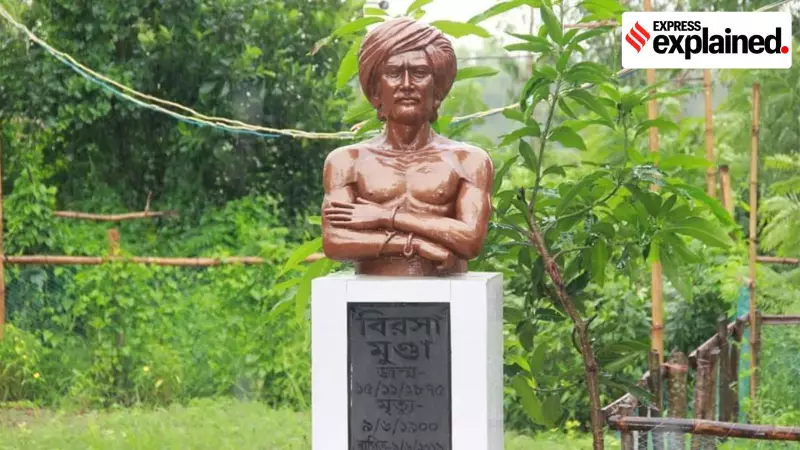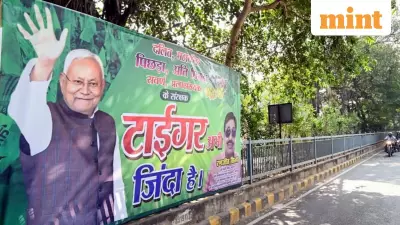
Twenty-five years after its creation, Jharkhand stands as a testament to both the power of regional aspirations and the challenges of delivering on revolutionary promises. Carved out of Bihar on November 15, 2000, the state was born from decades of struggle for Adivasi autonomy and cultural protection, yet finds its foundational vision only partially realized.
The Historical Roots of Jharkhand Movement
The demand for Jharkhand traces its origins to the late 19th century and the revolutionary spirit of Birsa Munda, whose powerful slogan "Abua dishum, abua raj" (Our land, our rule) became the rallying cry for generations of activists. Throughout the colonial period, Adivasi communities in Chhotanagpur witnessed their way of life systematically disrupted, leading to significant rebellions like the Hul of 1855-56 and Birsa Munda's Ulgulan of 1899.
According to author S Bosu Mullick, the Jharkhand movement emerged from the fundamental conflict between two mutually exclusive ways of life: the indigenous Adivasi communities and the Diku (outsiders). This sociological binary, while simplistic, carried significant political weight in a region where Adivasi resources and identities faced repeated encroachment.
The early 20th century saw crucial developments with the passage of the Chota Nagpur Tenancy Act in 1908, which restricted transfer of Adivasi land to non-Adivasis. However, this legislation fell short of the comprehensive self-rule envisioned by Birsa Munda.
The Organizational Journey to Statehood
The formal articulation for a separate Jharkhand began taking shape in 1912 with Theodore Surin's arguments about the region's distinct cultural identity. The establishment of Chhota Nagpur Unnati Samaj in 1915 marked a significant milestone, focusing on Adivasi socio-economic progress and cultural preservation while explicitly excluding Dikus from membership.
The movement gained political momentum in the 1930s with the emergence of various Adivasi organizations that eventually united under the Chotanagpur-Santhal Pargana Adivasi Sabha in 1938. This platform brought together leaders from Ho, Munda, Santhal, and Oraon communities, transforming the movement from social reform to political mobilization.
The pivotal moment came with the emergence of Jaipal Singh Munda in 1939. An Oxford-educated intellectual, former ICS officer, and captain of India's gold-winning 1928 hockey team, Munda was accorded the title of "Marang Gomke" (Great Leader) and became the face of the Jharkhand demand.
Munda's strategic brilliance became evident when he transformed the Adivasi Mahasabha into the Jharkhand Party in 1949, opening its doors to both tribals and non-tribals. The party's impressive performance in the 1951-52 and 1957 Bihar Assembly elections, where it emerged as the main opposition, gave substantial weight to the statehood demand.
Political Evolution and Final Achievement
Despite early successes, the movement faced significant setbacks. The States Reorganisation Commission rejected the Jharkhand proposal in 1955, citing Adivasi minority status and the region's importance to Bihar's economy. Munda's decision to merge with Congress in 1963 further stalled momentum, though he later revived the party before his death in 1970.
The vacuum left by Munda's passing was filled by the Jharkhand Mukti Morcha (JMM) in 1972, born from the merger of three organizations representing different social groups. Under Shibu Soren's leadership, the JMM championed grassroots movements against moneylenders and unjust forestry practices, though its entry into electoral politics in 1980 significantly tempered its radical approach.
The 1980s saw more aggressive mobilization through organizations like the All Jharkhand Students' Union (AJSU) and Jharkhand Coordination Committee (JCC), which revived demands for Greater Jharkhand. Crucially, the Bharatiya Janata Party's support for creating 'Vananchal' created broader political consensus for reorganization.
The political landscape shifted decisively when the BJP-led NDA government passed the Bihar Reorganization Bill in 2000, receiving Presidential assent on August 25 and formally creating Jharkhand on November 15, 2000 - Birsa Munda's birth anniversary.
Twenty-Five Years of Unfulfilled Promise
Despite inheriting nearly 40% of India's mineral wealth, Jharkhand's development trajectory has been disappointing. While the state's per capita income of Rs 1,15,960 (2023-24) exceeds Bihar's Rs 66,828, it remains significantly below the national average of Rs 2,15,935.
The state's economic challenges are compounded by persistent governance issues. Jharkhand has witnessed 11 government changes, three instances of President's Rule, and only two chief ministers completing full five-year terms since its formation.
According to activist Sanjay Bosu Mullick, "internal colonialism" remains the primary obstacle, with both policy formation and implementation dominated by non-Jharkhandis. Economist Jean Drèze notes that the state has failed to utilize its human and natural resources effectively, turning Jharkhand into "a reserve army of cheap labour for other states."
The consequences are visible in the thousands of Adivasi and Kurmi workers who risk their lives as migrant laborers in Gulf and African nations, often facing wage denial, unsafe conditions, and sometimes kidnapping or death.
Twenty-five years after its creation, Jharkhand stands at a crossroads - rich in resources but poor in development, born from dreams of autonomy but struggling with governance challenges that prevent the realization of Birsa Munda's vision of true self-rule.





